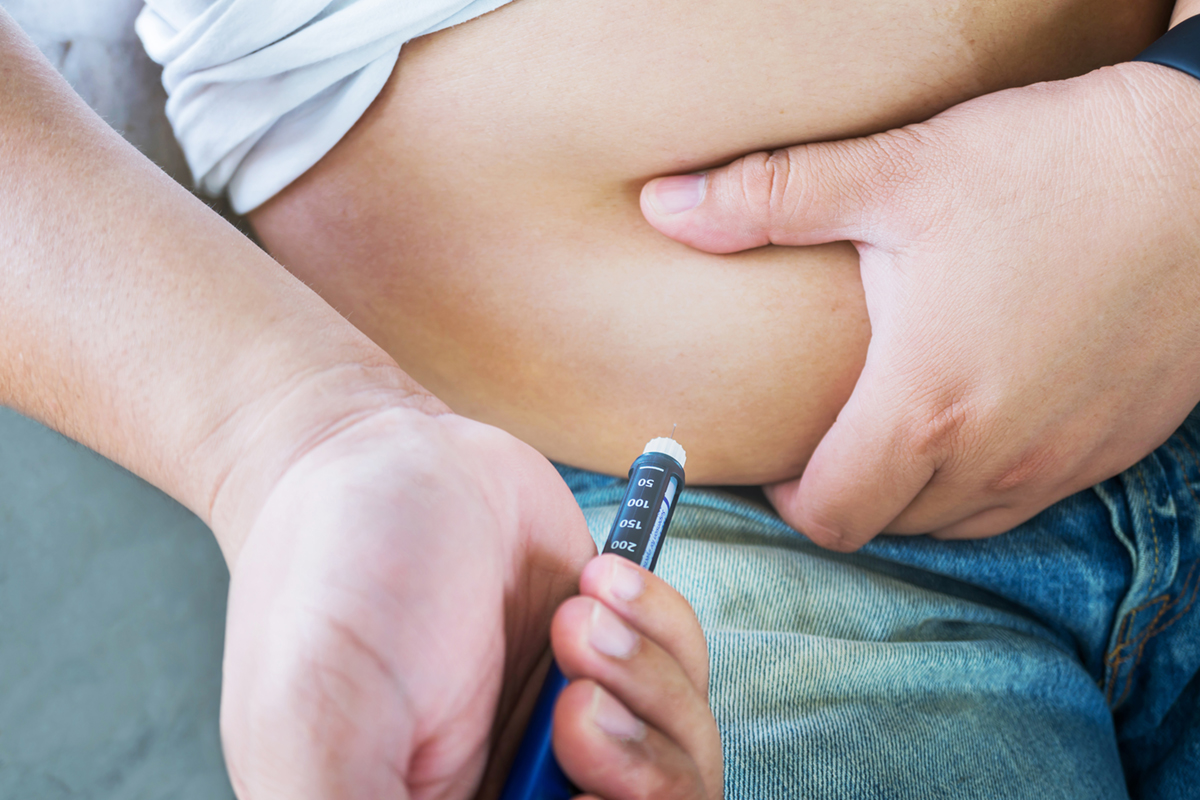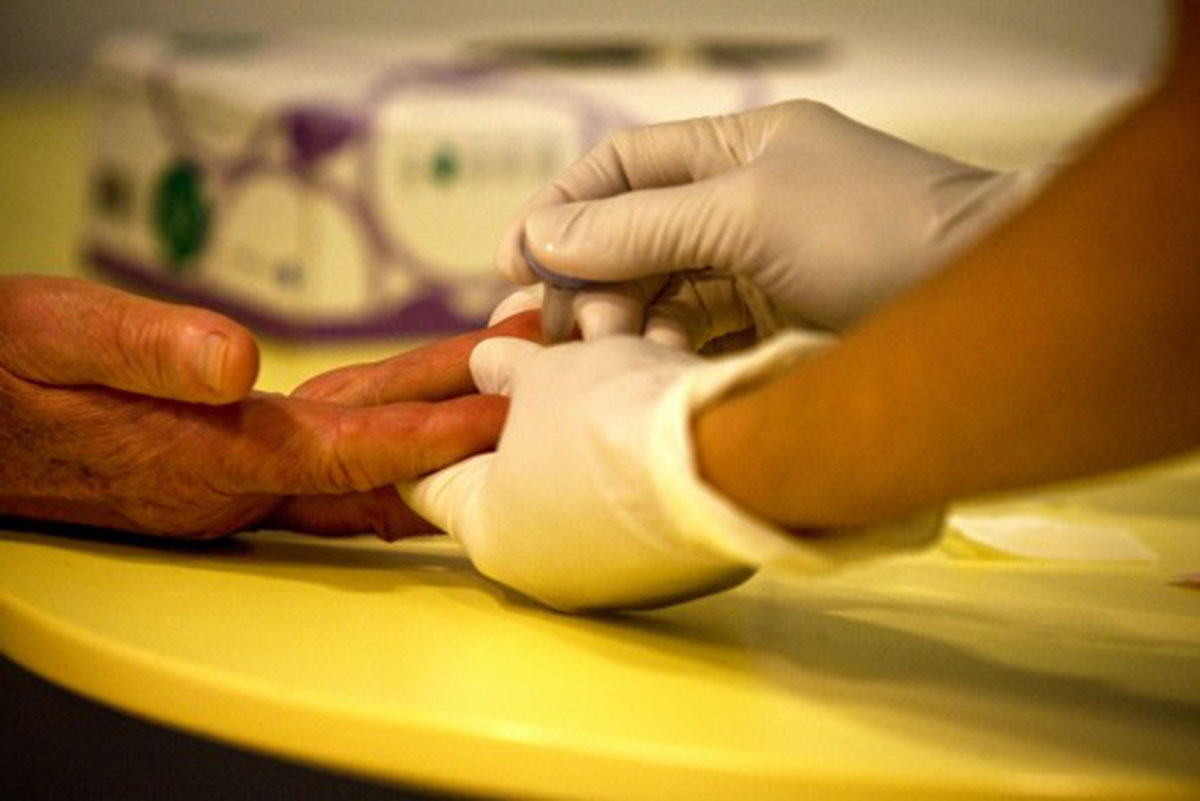The

Diabetes basics
There are several kinds of diabetes, and the most common are:
Diabetes mellitus type 1
It is also called insulin dependent diabetes mellitus and is characterized by decreased or absent production of insulin. Type 1 diabetes almost always requires insulin injections, and is fatal without the proper treatment. It is considered to be an autoimmune disorder. The theory is that during the disease, body makes antibodies that attack the insulin-producing cells in the pancreas. No one really knows exactly what could be the cause because it is very complex and unclear, and may involve genetics, viruses, diet and environmental factors such as chemicals. It is important to know that people with type 1 diabetes must supply insulin by injection, pump or other methods.
Diabetes mellitus type 2
It is also called adult onset diabetes, obesity related diabetes, or non-insulin dependent diabetes mellitus and it is characterized by body tissue resistance to insulin action, although in most cases-secretion of insulin is normal. It is important to know that type 2 is by far the most common form, especially in developed countries, and is caused by a decrease in the ability to signal via the insulin receptor. Type 2 diabetes can often be managed by dietary adjustments and monitoring, weight reduction, exercise, and oral medication.
There are several rare causes of diabetes mellitus that can't be classified as type 1, type 2:
- Genetic defects in beta cells
- Genetically-related insulin resistance
- Diseases of the pancreas
- Hormonal defects
- Chemicals or drugs
Glucose - it's purpose in human organism
Glucose is a type of sugar, called monosaccharide, derived from the breakdown of complex carbohydrates and proteins. It is important to know that it represents the exclusive fuel of the human nervous system and the primary fuel of most of the other systems in the body.

That’s why, it is easy to understand that a healthy level of glucose in the blood is essential to life and health. What happens if the glucose level is too low? Well, the nervous system and muscular system is starved for fuel and begins to malfunction.
The first symptoms include
- weakness,
- low energy,
- irritability,
- being excessively emotional,
- impaired ability to reason, etc.
Hyperglycemia is harmful to all internal organs and tissues and accelerates the aging process by facilitating the formation of chemical bonds between glucose and the proteins found in the body.
Diabetes and weight changes
Obesity and type 2-diabetes are tightly linked. Nearly 9 out of 10 people with newly diagnosed type 2 diabetes are overweight. The more overweight someone is, the higher their risk of getting diabetes. This risk also progresses with time. Obesity may even sometimes lead to diabetes because of its effects on insulin resistance. Insulin is a hormone produced by the pancreas. The fact is that weight gain is common after starting insulin therapy. Many people gain 0.5- 1.5 kg as the supplemental insulin begins to control their blood sugar. Weight gain is more common in women than in men, but, it's difficult to predict who will gain weight.
How does this weight gain occur?
- It may result as a direct complication of diabetes or
- It can be related to medication being taken to treat other complications, such as antipsychotics.
What are the causes of weight gain?
There are many reasons why people gain weight when they begin with the insulin therapy. One theory is that one's metabolism slows down when blood sugars come under control. The additional weight can increase your cells' resistance to insulin and may therefore increase your need for medication, creating a vicious circle of increased weight and insulin resistance.
Although most of the patients realize that their weight can make a big difference in their diabetes control, they must be aware of the fact that losing weight won’t cure type 2-diabetes. However, it will bring glucose levels down. Weight loss of 10 to 20 pounds can be enough to improve diabetes control. The closer to normal the diabetics keep their glucose levels, the fewer complications they will have. What happens if the person is overweight and has diabetes? In people with Type 2 diabetes, who are usually overweight, the beta cells in the pancreases cannot produce enough insulin to maintain the balance.
Beside the fact that people with diabetes are more likely to be overweight, they are also at risk of having high blood pressure and high cholesterol. At least one out of every five overweight people has several metabolic problems at once, which can lead to serious complications like heart disease.
Weight loss for diabetics
Losing weight and keeping it off for good is definitely a real challenge for most people. That’s why it would be best if diabetic would start with some healthy meal plan as soon as possible. The best way is to decrease calories but still consume the foods you enjoy. It's important to remember that losing even a relatively small amount of weight can make a real improvement in reducing your risk of diabetes and other serious conditions.
Exercise
Exercise is also known as a beneficial factor in maintaining healthy glucose level. It doesn’t have to be some precise physical exercises - it may include anything that gets you moving, such as walking, dancing, or working in the yard. The fact is that when you're physically fit, you have the strength, flexibility, and endurance needed for your daily activities. Being physically active helps you feel better physically and mentally.
Counting Carbohydrates and Fiber
Carbohydrates are one of the major food categories, beside proteins and fats.
There are two types of carbohydrates:
- Simple - sugars like glucose, sucrose, lactose and fructose. They are found in refined sugar and in fruits.
- Complex- starches, which are the simple sugars bonded together chemically. They are found in beans, nuts, vegetables and whole grains. They are considered healthier mostly because they are digested slowly, providing a steady source of energy. They also contain valuable amounts of fiber.
Carbohydrates are mainly found in the following food groups:
- Fruit
- Milk and yogurt
- Bread, cereal, rice, pasta
- Starchy vegetables
Carbohydrate counting is a method of meal planning that is a simple way to keep track of the amount of total carbohydrate a person eats each day. What makest this plan so good? It allows you to eat what you want. Counting grams of carbohydrate and evenly distributing them at meals will help you control your blood glucose. With carbohydrate counting, you plan your carbohydrate intake based on what your pre-meal sugar is and your intake or insulin dose can be adjusted.
Fibers are also very important because diets high in fiber are associated with lower risks of obesity, hypertension, heart disease and strokes.
A number of special diets have been developed to reduce weight in diabetics and some studies suggest that replacing foods high in fats with low-fat complex carbohydrates may be more effective than calorie counting, particularly in maintaining weight loss.
Food guide for people with diabetes
A healthful diet provides the nutrients your body needs and decreases the risk of developing a heart disease and other conditions.
Evidence shows that a 10%-reduction in body weight can lead to an average of 50% reduction in blood sugar levels. Most people use the food guide pyramid to plan a balanced diet.
The key points of such plans are:
- People with diabetes can use a modified version of the food guide pyramid to spread carbohydrate throughout the day. This helps prevent high blood sugar after meals.
- A food guide contains the same foods your family eats. You do not have to eat special foods.
- You can successfully follow this method by:
- Planning your family meals ahead of time so you can enjoy the same foods as other family members.
- Providing lots of variety in the foods you eat so it's easier to follow your plan.
- Testing your blood sugar after meals to see what effect different foods have on your blood sugar level.
- Women with diabetes who are pregnant or breast-feeding need the same nutrition as pregnant or breast-feeding women who do not have diabetes. This means that they need extra calcium, iron, protein, and folic acid. During the second and third trimester, you also need about 300 calories per day more than you did before pregnancy. Regular meals and snacks are important to prevent low blood sugar during pregnancy and breast-feeding.
Important!
Extreme diets of less than 1,100 calories carry health risks and are often followed by bingeing or overeating and a return to the obese state. You should know that, while intentional weight loss in people with diabetes is usually a good thing, unintentional weight loss is definitely not. If blood sugars are very high, patients with diabetes tend to urinate a lot, and this result in dehydration as a possible cause of weight loss. Also, muscle breakdown can occur if sugars are too high, causing an unhealthy weight loss.
- www.umm.edu
- www.wikipedia.com
- www.webmd.com
- Photo courtesy of Oskar Annermarken by Flickr : www.flickr.com/photos/oskarannermarken/6347508912/

